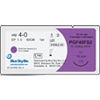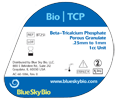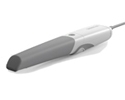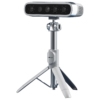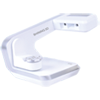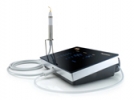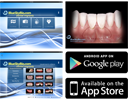- Shop Online
- Implant Systems
- Photogrammetry System
- iSmile Teledentistry
- Sutures
- Orthodontics
- Endodontics
- Biologics
- Surgical Motors
- Instrumentation
- Measure Osseointegration
- Handheld X-Ray
- Implant Detector
- Intra-Oral Scanner
- Face 3D Scanner
- Desktop Scanners
- 3D Printers
- Milling
- Zirconia Oven
- CBCT
- Piezosurgery
- Centrifuge
- PlasmaLoc
- Sterilizers
- Shade Analyzer
- Camera
- Safety Supplies
- Guide Tubes
- Preformed Arch Bars
- STL Case Export
- Custom Abutment Blanks
- Exocad Software
- BIO | View App
- Advantages
- Free Instruments
- Starter Packages
- Software
- App
- Support
- Video Manuals
- Manuals
- Education
- Studies
- Videos
- Sinus Lift Kit
- Basic Hammerless Sinus Lift Instrument Technique
- Advanced Simplified Sinus Lift Technique (No Probe)
- Full Arch With Surgical Guide with Bone Expander
- Full Arch Extractions and Implant Placement
- Amazing Accuracy of Guided Surgery. All on 4 Edentulous Arch
- Blue Sky Bio and FormLabs Deliver a Revolutionary DICOM to Surgical Guide Protocol
- About Us
- Documents / IFUs

Click here to review the 3D Bond manual.
3D Bond™ is a synthetic, osteoconductive, bioactive, bioresorbable graft binder cement composed of Biphasic Calcium Sulfate in a granulated powder form.
3D Bond™ functions as a scaffold for bone regeneration in dental procedures and is intended to fill, augment or reconstruct bony defects in the oral and maxillofacial region.
3D Bond™ is a unique pure Biphasic Calcium Sulfate, representing a breakthrough in the field of maxillofacial augmentation.
3D Bond™ is the only cement of its type that sets within a short time after being laid, even in the presence of blood and saliva – an environment that is characteristic to the oral cavity. The product can also be used in a combination with a wide range of bone graft particles, which have longer absorption times, thus allowing clinicians to perform more complex augmentation procedures and get better results.
The 3D Bond – bone graft material is biocompatible, resorbed and replaced completely within 4-10 weeks, which is the exact time required for bone regeneration. The result is complete exchange of the bone graft material with the patient’s own bone within the shortest and optimal time period.
- Self-setting cement, cement, with an ability to attach to and set at the work site.
- Biocompatible
- Completely resorbed and replaced by the patient own bone
- Can be bonded with any existing bone graft substitute
- Can be used as a barrier above other augmentation materials
Graft Binder Cement - 3D Bond™ - Indications For Use
1. By itself filling in osseous cavities – Limited to lesions whose width not exceed 10 mm and are surrounded by 3 bone support walls (such as socket preservation, from first-central to second premolar and molars with an existing septum).
2. As a composite graft in combination with other granular augmentation materials – Once the cement sets, a stable mass is received, which makes the augmentation process quicker, easier, and overall helps improve results (intended for a range of complex lesions).
3. As a membrane Over existing augmentation materials.
3D Bond™ - Step By Step
3D Bond™ can be used by itself or in combination of other bone substitutes
Using 3D Bond™ by itself is limited to small lesions, like filling sockets of incisors, premolars, as well as molars with an existing septum.
In large lesions which require a longer space maintainer, it is recommended using 3D Bond™ in combination with other bone substitutes, creating a composite graft.
Materials Needed
.jpg)
Before applying 3D Bond™, make sure you have the items described:
A. A sterile 3D Bond™ driver
B. Sterile dry gauze pads.
C. Sterile medical syringe – Sterile saline (sodium chloride 0.9% for injection).
D. Sterile medical needle 21-27G (1.25-1.5/31.75mm-38.1mm).
E. Sterile granules of your preferable bone graft.
F. Sterile dish.
G. Sterile spatula
Step By Step Instructions
|
1. Add 3D Bond™ to the overall granules within the dish. Use a volume ratio of 2 parts 3D Bond™ to 1 part granules. (For example, add 1cc 3D Bond™ to 0.5cc granules). |
2. Use a spatula and mix the dry blend thoroughly. |
.jpg) |
.jpg) |
|
3. Add 0.8 cc saline for one portion of 1.5cc (granules/ 3D Bond™) for complete saturation of the blend (A) |
4. Use a spatula to mix the blend thoroughly until obtaining a homogeneous creamy texture (The texture is ready when it’s well mixed and has a shiny and glossy appearance). (B) |
.jpg) |
.jpg) |
|
5. Absorb water surpluses by applying a dry gauze pad above the mixture. Do not use pressure |
6. Use the empty 3D Bond™ driver as a carrier for the putty by drawing the piston to line 1 marked on the driver and re-load it with the putty. Note: Make sure that the time elapsed from the introduction of saline into 3D Bond™ will not exceed 3 minutes. |
.jpg) |
.jpg) |
|
7. Apply the 3D Bond™ composite putty into the required site by pushing the piston and ejecting the putty. (A) |
8. The composite paste should be in direct contact with the bone and slightly overfilled. (B) |
.jpg) |
.jpg) |
|
9. Compress above with a dry gauze pad for 3-5 seconds for condensing the putty. Shape as necessary to achieve the desired form. |
10. Wet a gauze pad with sterile saline and place it passively on the graft. Remove the gauze pad after about 2 minutes. |
.jpg) |
.jpg) |
Click here to review Augma Bio Protocols & Tips.
Reviews(0)Leave Review
To leave a review, please log in and refresh the page.
No ratings. Be the first to leave a review!


